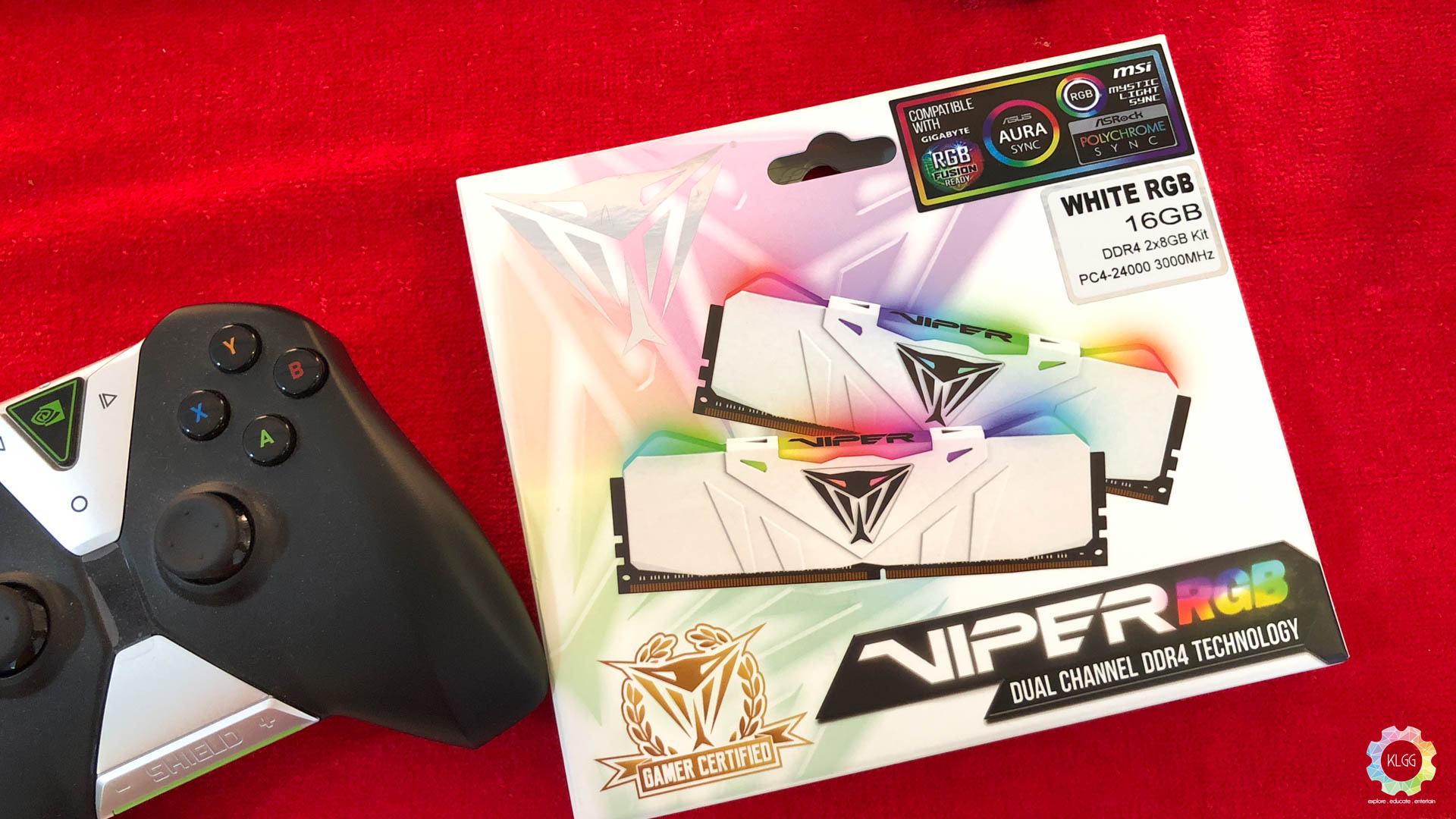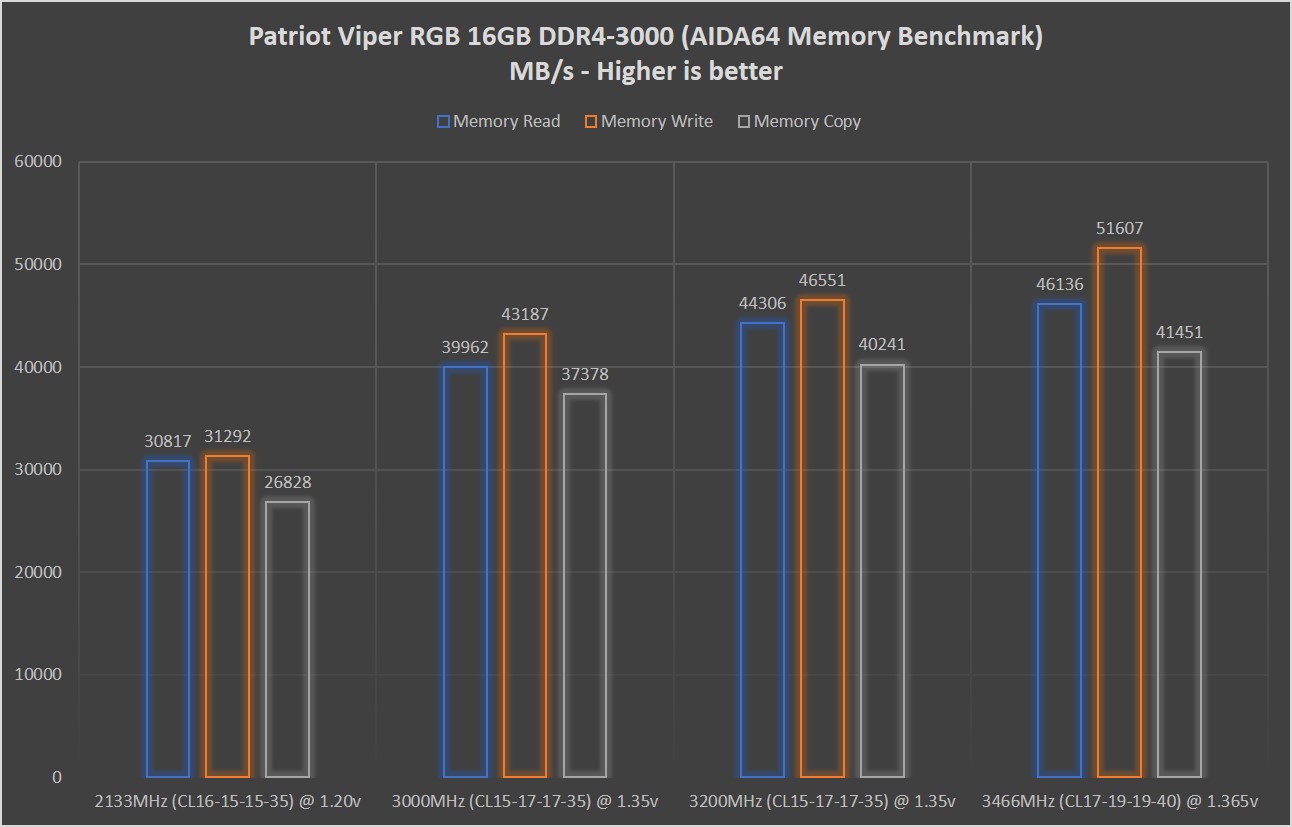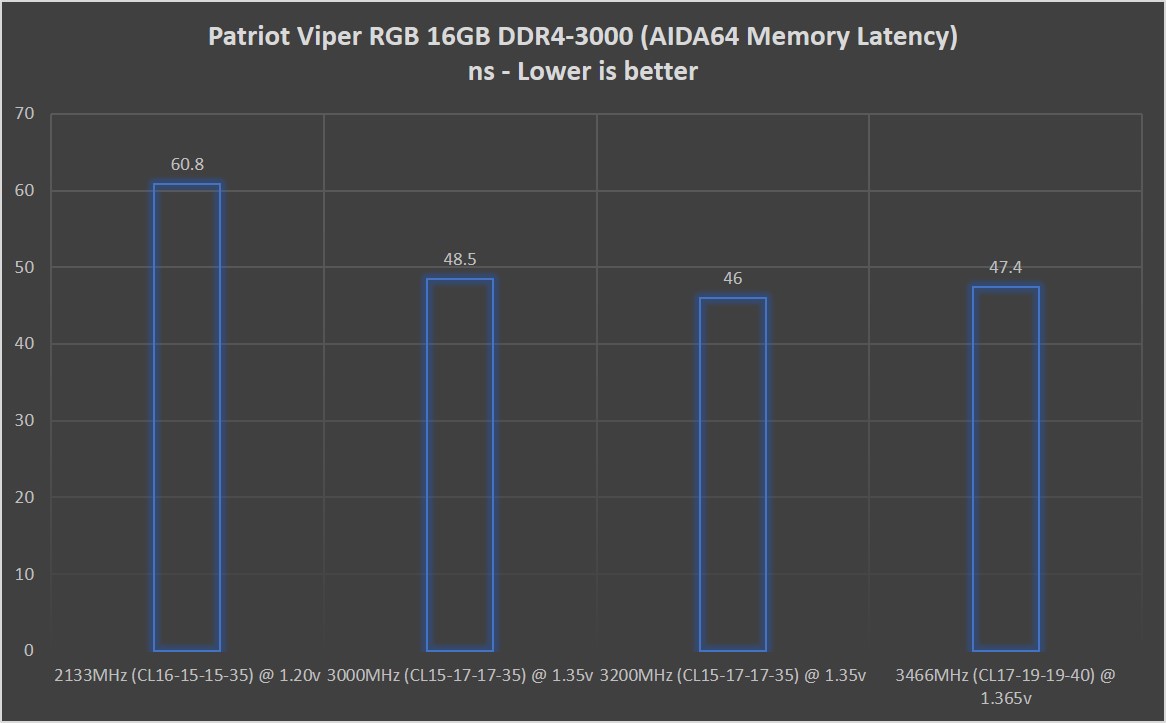For today’s PC builders, there’s simply no reason to go for a nice XMP capable RAM kit as they do take performance to the next level, let alone the gimmicky things that manufacturers have been introducing to spice up your system. While we haven’t been actively reviewing PC components on our site, Patriot has kindly sent their popular Viper RGB DDR4 RAM for our review, the sticks that we receive are 16GB memory kits and supports XMP speeds of 3000MHz at an impressive 15-17-17-35 timing, it also happens to support the most motherboard RGB lighting system, with ASRock’s Polychrome Sync as the most recent addition.
The packaging of the Viper RGB RAM looks pretty attractive, as it shows a shiny Viper Gaming branding on the top left, you will also notice a sticker on the top right to assure you that it supports RGB lighting systems from major motherboard manufacturers.
 Contents of the box include a pair of Viper Gaming stickers, which the company probably expect you to stick on your PC monitor or case like Apple stickers, then there’s a installation card that tells you how to install the memory sticks, and a disclaimer to tell you that you shouldn’t have Viper’s RGB software installed should you decide to use your motherboard’s RGB software.
Contents of the box include a pair of Viper Gaming stickers, which the company probably expect you to stick on your PC monitor or case like Apple stickers, then there’s a installation card that tells you how to install the memory sticks, and a disclaimer to tell you that you shouldn’t have Viper’s RGB software installed should you decide to use your motherboard’s RGB software.
 And finally, here’s the pair of the Viper RGB RAM with 8GB of memory on each of them, aggressive white heatshields with a cut out of the Viper’s eyes that glows when turned on, the RAM sticks have 5-zones of RGB lighting that you toy around with.
And finally, here’s the pair of the Viper RGB RAM with 8GB of memory on each of them, aggressive white heatshields with a cut out of the Viper’s eyes that glows when turned on, the RAM sticks have 5-zones of RGB lighting that you toy around with.
System Configuration
- CPU: Intel Core i7-7700K
- Motherboard: Gigabyte Z170X-Ultra Gaming
- GPU: NVIDIA GeForce GTX 1080 Founders Edition
- SSD: Kingston UV400 120GB
- HDD: Seagate FireCuda 2TB
- PSU: Aerocool KCAS-800W
- Case: Cooler Master Test Bench V1.0
Patriot Viper RGB Memory Software
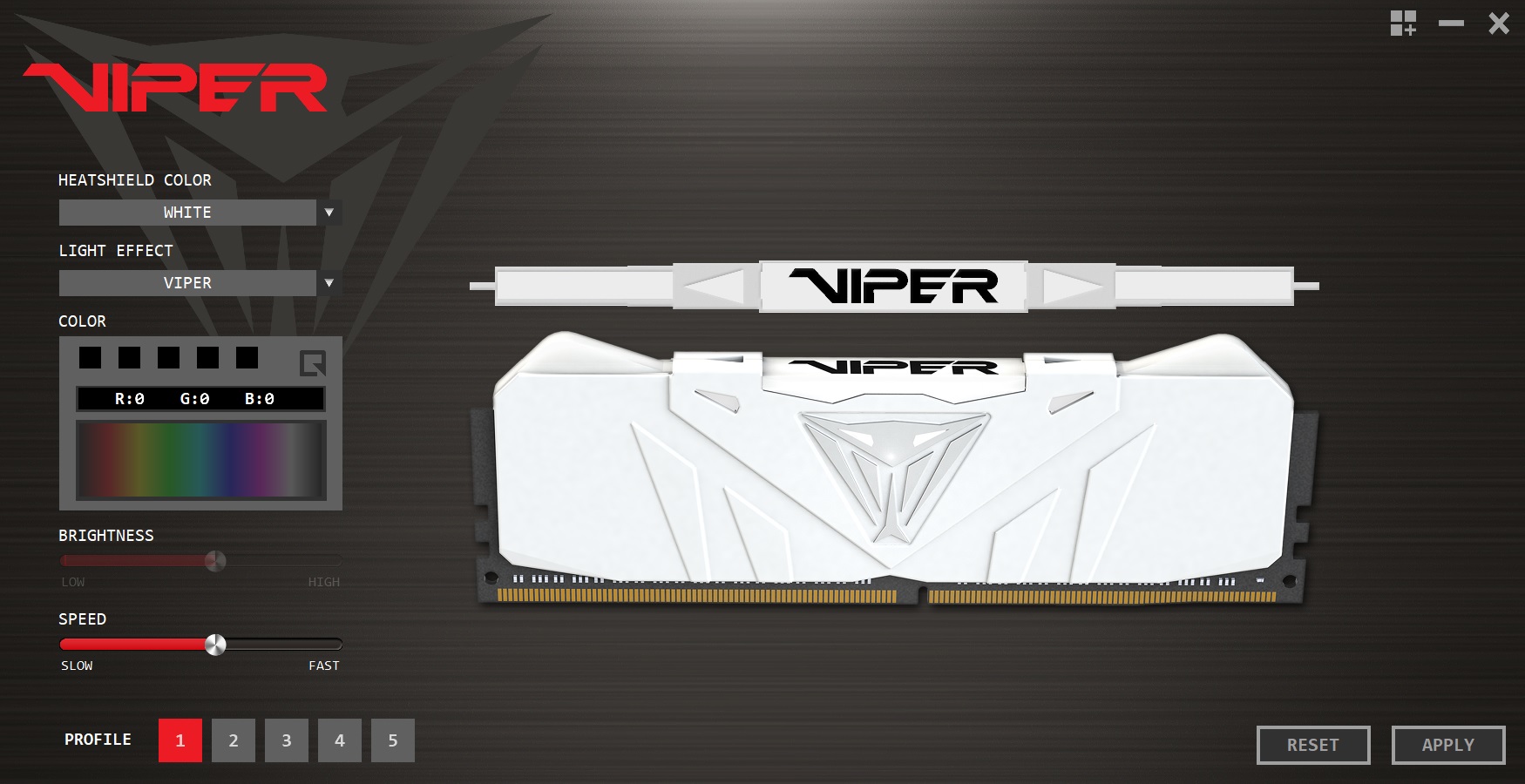 Since our motherboard doesn’t come with any built-in RGB software, we downloaded Patriot’s Viper RGB software and it works flawlessly on our system. On the application, you can save up to 5 profiles of lighting effects, choose from 8 different lighting effects and set how fast you want them to be. Overall, I like the ‘Viper’ effect the most as it looks really cool with the Viper’s eyes glowing static in a few seconds, then lighting up the rest of the lighting zones after that.
Since our motherboard doesn’t come with any built-in RGB software, we downloaded Patriot’s Viper RGB software and it works flawlessly on our system. On the application, you can save up to 5 profiles of lighting effects, choose from 8 different lighting effects and set how fast you want them to be. Overall, I like the ‘Viper’ effect the most as it looks really cool with the Viper’s eyes glowing static in a few seconds, then lighting up the rest of the lighting zones after that.
Performance and Synthetic Benchmarks
In our tests, we use AIDA64 Extreme Edition to find out the transfer speeds and latency, and 7-Zip to find out how fast these sticks are when it comes to managing file compression tasks.
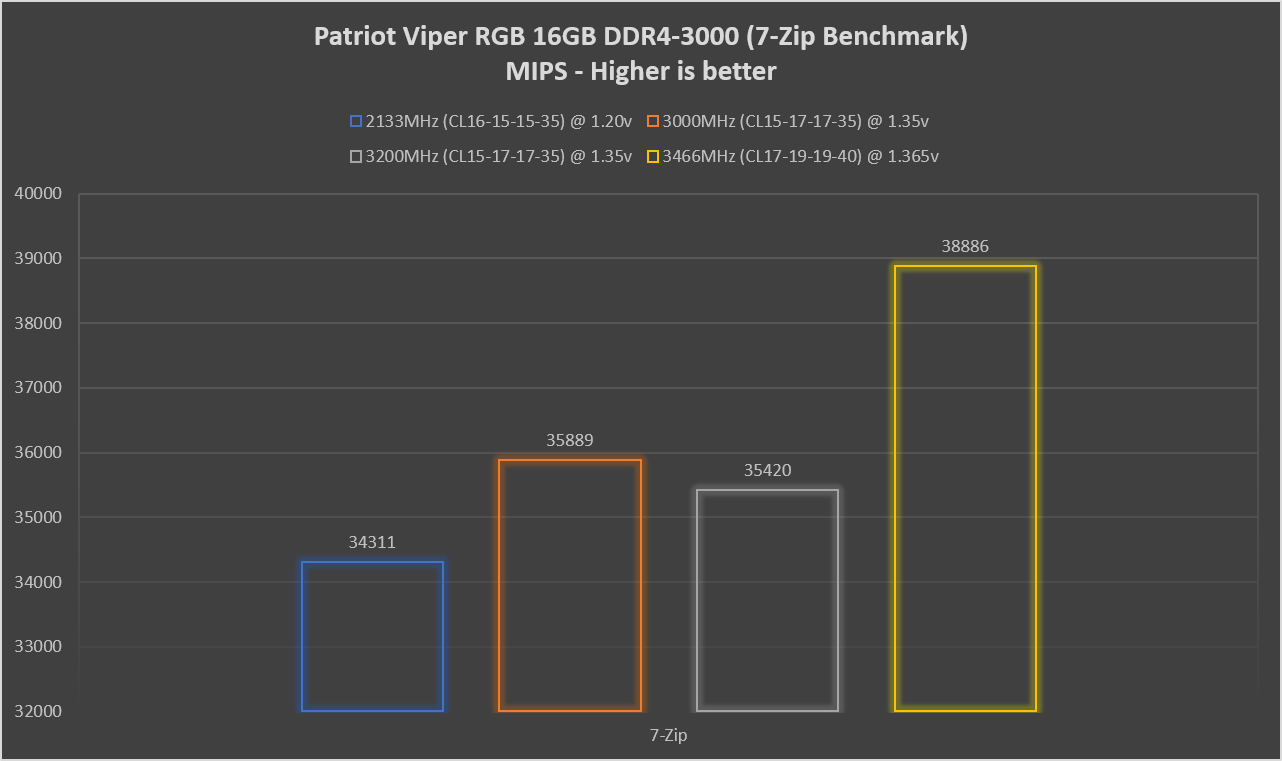 The Viper RGB RAM performed significantly better when we activated the XMP profile at 3000MHz, though timings are slightly up from its original 2133MHz frequency, we are seeing a significantly shorter latency. In real world situations, we realized that our games load up at least 2-3 seconds faster when XMP is enabled.
The Viper RGB RAM performed significantly better when we activated the XMP profile at 3000MHz, though timings are slightly up from its original 2133MHz frequency, we are seeing a significantly shorter latency. In real world situations, we realized that our games load up at least 2-3 seconds faster when XMP is enabled.
Without changing the XMP timings and Vcore, I was able to push the memory frequency up to 3200MHz effortlessly, we see close to 10% of performance improvements and manage to hit an incredibly low 46.0ns latency.
Things begin to get challenging when we tried to bump the RAM’s frequency up to 3466MHz, where it requires some tweaking to the timings and voltage, we also tried increasing the Vcore of our IMC for better stability. Finally, I ended up at 3466MHz at CL17-19-19-40 with a DRAM Vcore of 1.365V and an IMC Vcore of 1.32V, any further overclocking of the RAM results in system instability and slower performance.
Verdict
 Patriot’s Viper RGB RAM stays true to the brand’s message of offering the most extreme performance to your PC, we are particularly impressed with the performance bump it offers with so little tweaking effort, not to forget the great customizability of the 5-zone RGB lighting and support for major motherboard RGB lighting systems. The Viper Gaming RGB 16GB 3000MHz kit retails at RM859, it is available in black or white heatshields, with the black heatshield model supporting XMP speeds of up to 4133MHz.
Patriot’s Viper RGB RAM stays true to the brand’s message of offering the most extreme performance to your PC, we are particularly impressed with the performance bump it offers with so little tweaking effort, not to forget the great customizability of the 5-zone RGB lighting and support for major motherboard RGB lighting systems. The Viper Gaming RGB 16GB 3000MHz kit retails at RM859, it is available in black or white heatshields, with the black heatshield model supporting XMP speeds of up to 4133MHz.
The Good
- Reasonably priced
- Short latency in XMP mode
- 5-zone RGB lighting system
The Not so Good
- No 32GB kit
- No 4133MHz for white heatshield model


